Ryan Hall's Blog, page 313
December 9, 2015
Video: Watch The “Kissing The Rock” Hardrock 100 Movie Trailer
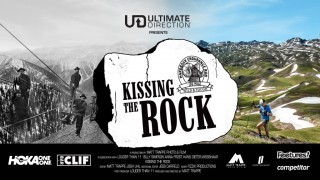
"Kissing The Rock," a new film about the Hundred Endurance Run in Colorado, debuts in February 2016. Photos: San Juan County Historical Society/Myke Hermsmeyer
From the late 19th century to the late 20th century, hardrock miners of southwestern Colorado experienced adversity on another level through the hardships they faced in the rugged San Juan Mountains. When the mines closed and the jobs dried up, the town of Silverton was in search of a new identity. The Hardrock Hundred Endurance Run, a 100-mile endurance run started in 1992, epitomizes the community aspect of mountain ultrarunning through the parallels of the adversity the runners face, the grueling nature of the course and the family atmosphere the race has fostered. The mentality of everyone vs. the mountain exists everywhere in trail running, but especially so at Hardrock—which includes more than 66,000 feet of elevation gain and loss, a course profile with an average elevation of more than 11,000 feet above sea level and extreme weather that can include extreme heat, violent thunderstorms, gusting wind, lightning and even snow. Friends and runners gather every July in Silverton—to race, to watch, to crew and to volunteer—and a town is reborn. “Kissing the Rock,” a new documentary film about the race produced and directed by Matt Trappe in association with Louder than 11, will launch in February 2016.
The post Video: Watch The “Kissing The Rock” Hardrock 100 Movie Trailer appeared first on Competitor.com.
What To Do When Your Training Plan Isn’t Working

Photo: Shutterstock.com
Former heavyweight boxing champion Mike Tyson once said that everybody has a plan until they get punched in the mouth. This quote might resonate with those of us who have been proverbially “punched in the mouth” by a training plan that just isn’t working out. This result could be a feeling of burnout out or, conversely, not feeling like the plan is challenging enough.
So, what should you do? Bail on the plan or keep at it? Here are three suggestions from some two top coaches and an elite athlete:
1. Don’t give up on it immediately.
Jeff Gaudette, head coach of RunnersConnect, says that runners can’t expect to realize the results of a training plan until at least eight weeks into it. “It’s important to stick with the plan through these eight weeks, because you need to give your body time to adjust,” he says. “If you’re changing the stimulus, there is going to be resistance and you need to work through it.” Let’s face it: no training plan is ever going to be easy, and when the going gets tough or your body begins to break down, we immediately want to blame it for our problems. “If after eight weeks you’re still really struggling or not seeing results, you can consider pulling the plug,” advises Gaudette.
2. Listen to your body and embrace flexibility.
Most stock training plans don’t understand your injury history, what motivates you, or how you respond to increased mileage and pace. Dennis Barker, head coach of Team USA Minnesota urges, runners to be adaptable when it comes to training. “The goal is to improve and run faster, so a plan should be adjusted if improvement isn’t occurring,” he suggests. “There was a reason the plan was chosen in the first place, so I wouldn’t just dump it altogether. Even slight adjustments to paces, volume and/or recovery can make a big difference.”
Gaudette agrees and further explains that it’s likely two people of exactly the same age and similar running backgrounds can follow the same training plan and end up with vastly different results. Given that, understand that you are well within your rights to adapt a plan to suit your needs. Apply common sense and remember that training plans aren’t exact recipes. Stay the course, find the elements of the plan that you aren’t responding well to and make slight adjustments.
3. Learn from your experience.
If you decide to bail on a particular training plan, resist the knee-jerk urge to immediately blame the plan. Take a time out to evaluate what’s causing you to doubt it in the first place. For this exercise, Barker says you should ask yourself the following questions:
— Did you bite off more than you could chew?
— Do you prepare properly (training to train) prior to starting the plan?
— Was your goal always clear in your mind?
— Were you flexible enough to make adjustments on days when the pace or volume was too difficult to achieve?
— Were you recovered enough for the next workout?
With these answers in mind, reevaluate your situation and begin the process of getting back on track. Jeffrey Eggleston, a 2:10 marathoner, admits that he’s abandoned training plans during his career—but that quitting a plan doesn’t equate to admitting to failure. Rather, it’s chalking it up as a valuable learning experience. “Demonstrate that you’ve learned by going back to the basics and draw from what has previously helped you get to a successful point,” he advises. “Recognize that you need to balance your strengths and weaknesses, and find ways to incorporate both into your running routine. Simplify your training and only map out a few weeks at a time. Set small goals for each phase that you can continue to build on.”
RELATED: Don’t Be A Slave To The 7-Day Training Week
The post What To Do When Your Training Plan Isn’t Working appeared first on Competitor.com.
Workout Of The Week: Steep Hill Sprints
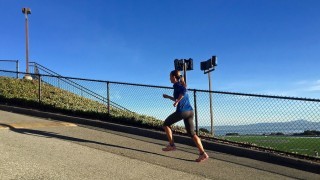
Steep uphill sprints strengthen all of the running muscles, helping make you much less injury-prone.
One of the signature training methods I use with my runners are steep hill sprints. These short, maximum-intensity efforts against gravity provide two key benefits. First, they strengthen all of the running muscles, making the runner much less injury-prone. They also increase the power and efficiency of the stride, enabling the runner to cover more ground with each stride with less energy in race circumstances. These are significant benefits from a training method that takes very little time and is fun to do.
My runners don’t lift any weights. Except for a little core conditioning work, steep hill sprints are the only strength training they do, and they do them year-round, because you need strength at all times in the training process.
If you have never done a steep hill sprint before, you should not leap into a set of 10 of steep hill sprints the very first time you try them. These efforts place a tremendous stress on the muscles and connective tissues. Thus, the careless beginner is at some risk of suffering a muscle or tendon strain or another such acute injury when performing steep hill sprints. Once your legs have adapted to the stress they impose, steep hill sprints actually protect against injury. But you must proceed with caution until you get over the hump of those early adaptations.
RELATED: The Sisyphus Session
Your very first session, performed after completion of an easy run, should consist of just one or two 8-second sprints on a steep incline of approximately six percent. If you don’t know what a six-percent gradient looks or feels like, get on a treadmill and adjust the incline to six percent. Then find a hill that matches it.
Your first session will stimulate physiological adaptations that serve to better protect your muscles and connective tissues from damage in your next session. Known to exercise scientists as the “repeated bout effect,” these adaptations occur very quickly. If you do your first steep hill sprints on a Monday, you will be ready to do another session by Thursday—and you will almost certainly experience less muscle soreness after this second session.
Thanks to the repeated bout effect, you can increase your steep hill sprint training fairly rapidly and thereby develop strength and stride power quickly. First, increase the number of eight-second sprints you perform by two per session per week. Once you’re doing eight to 10 sprints, move to 10-second sprints and a steeper, eight-percent hill. After a few more weeks, advance to 12-second sprints on a 10-percent hill. Always allow yourself the opportunity to recovery fully between individual sprints within a session. In other words, rest long enough so that you are able to cover just as much distance in the next sprint as you did in the previous one. Simply walking back down the hill you just ran up should do the trick, but if you need more time, take it.
Most runners will achieve as much strength and power improvement as they can get by doing 10 to 12 hill sprints of 12 seconds each, twice a week. Once you have reached this level and have stopped gaining strength and power, you can cut back to one set of 10 to 12 hill sprints per week. This level of maximum power training will suffice to maintain your gains through the remainder of the training cycle.
Very few distance runners perform any truly maximum-effort running in their training. That’s a shame, because it is very beneficial and quite exhilarating. Try my steep hill sprints and see for yourself!
****
Brad Hudson is the head coach of Hudson Training Systems and the author of Run Faster from the 5K to the Marathon.
The post Workout Of The Week: Steep Hill Sprints appeared first on Competitor.com.
December 8, 2015
88-Year-Old Marathoner Keeps on Running

(c) 2015 Race Results Weekly, all rights reserved. Used with permission.
HONOLULU — Like the crashing waves along Waikiki Beach or the breathtaking Diamond Head crater that towers above the Pacific, Vancouver’s Betty Jean McHugh is an ageless wonder here at the Honolulu Marathon. At 88 years old, McHugh is one of the oldest entrants in what is America’s fifth largest marathon, and clearly the most capable of running a single-age world record alongside the Hawaiian coastline.
However, neither time nor the shiny new finisher’s medal will be on McHugh’s mind as she toes the line alongside Ala Moana Beach Park. Rather, her family will be at the forefront of her concerns: Betty Jean (who prefers B.J.) leads a three-generation contingent of McHughs that will once again race here, joined by son Brent, granddaughter Ava, and grandson David.
“It is very special, very, very special,” McHugh told Race Results Weekly, speaking by phone from her home in Canada on the eve of traveling here. “Having two of my four grandkids and my son racing, it is going to be a great experience.”
McHugh’s rise to the upper echelon of age-group running is a unique and captivating journey that will surely add another noteworthy chapter on Sunday. For as long as she can remember, she was an active woman: she played tennis and skied for many years, keeping pace with her children and late husband Bob. McHugh began running matter-of-factly at the age of 50 while waiting for her daughter to finish competitive swimming lessons; it was at the same time that the running boom was taking off among women.
Little did McHugh know that the sport of running would take her around the world, making her into a masters running icon and record setter. More importantly, it brought her family even closer together.
While McHugh has raced events across the world—racking up age-group honors at marathons in Boston, London, New York, Big Sur, Vancouver, and Victoria—she says that the Honolulu Marathon has always held a special place in her heart. She first ran the Honolulu Marathon to celebrate her 75th birthday, and never looked back.
“The first one I just remember one of the girls I run with asking what I was planning for my 75th, and I said maybe I’ll have breakfast in bed. She goes ‘no, you’re going to run a marathon!’ And that’s when it started in Honolulu,” she recalled with a laugh.
“Every year I say ‘This is going to be my last marathon.’ And then something happens and I do another one. So maybe this will be my last, I never know! As long as my body holds up I’ll keep doing one!” she said, noting this year’s motivation was her grandchildren.
McHugh doesn’t take running lightly. She has continually set single age world records at various distances, and currently holds four marathon single-age world records according to the Association of Road Racing Statisticians database (a fifth marathon world record would be hers as well pending its ratification, as she ran a net time of 5:36:49 here last year at the age of 87).
While the world record for 88-year-old women is well within her reach at 8 hours, 3 minutes and 24 seconds, McHugh isn’t too worried about the clock. She’s savoring this year’s race as it is the first time she’s run alongside four relatives.
McHugh, son Brent, and granddaughter Ava have completed the Honolulu Marathon in the same year twice before, including 2014. The first year the three did it, in 2012, is McHugh’s favorite memory to date. But it will surely be surpassed by Sunday’s race, when grandson David joins the trio in making his marathon debut.
Reflecting on passing the sport of running on to her family, McHugh paused for a moment. The upbeat and energetic athlete searched for the right words, not wanting to settle in describing just how proud she is of her loved ones.
“[Honolulu] is a nice destination, and I enjoy the destination marathons,” she said. “With a group, we have so much fun. It’s not just the marathon—it’s the fun we have before and after. I think it’s extra special here though because we have three generations. I know they probably wouldn’t run if they didn’t know that I run.”
She continued: “In particularly my grandson. He’s always been very much the student, and he was involved in sports but said he never really enjoyed them that much but thought that he should be doing something. When he started training for this marathon he just realized he loved running.”
While other marathons are nice, the Honolulu Marathon now represents a family reunion and celebration for the McHughs, said Brent. It’s time together doing something they all have come to enjoy.
“I think this is really special. Number one, it’s not often you can get family to do something, and having three generations get together and accomplish something like a marathon,” Brent began. “We’ve done it twice now but every time we do it another year’s gone by and it’s like ‘Can we really do this again?’ It really does mean something to me… They [the grand-kids] get a really big charge out of running with their grandmother. It’s a fun time of year.
“We’ve done a number of [marathons] but we’ve found the Honolulu Marathon is the easiest one to combine some fun with the fact that you’re doing a marathon,” said Brent, who finished in 3:36:30 last year. “We have a little fun before, do the race, and have fun afterwards, and always look forward to getting together.”
Admittedly, McHugh says that she’s wondered when her last marathon will be. She doesn’t want to think about the day she has to hang up her racing flats forgood.
Last Friday, while completing her final long training run before marathon race-day, McHugh tripped on a bump in the road and fell hard to the ground. Suffering a bruised hand, cuts on both knees, and a little scrape above the eye, she quipped about the result of her tumble.
“I landed on my right hand. It could have been a lot worse. I’m lucky it was my right hand as I’m left handed, and that meant I could still tie my shoes [and get out running]!” she said with a laugh. Indeed, even a fall couldn’t get in the way of McHugh running with her family on Sunday.
It is her family, friendships, and the positive health benefits of running that keep her going out the door day after day, meeting with friends to run in even the most inclement weather. Her keys to longevity in the sport are to surround yourself with good people, and most importantly enjoy the camaraderie of the sport.
“I think it’s just associating with people who are doing what I am doing,” she said. “It’s very motivating… That’s another reason why I feel I should take advantage of my good health.”
The post 88-Year-Old Marathoner Keeps on Running appeared first on Competitor.com.
New Balance Signs 10-Year Deal With New York Road Runners

NEW YORK — When a pro runner changes shoe brands, it might merit a footnote on the message boards or Twitter feeds. But when it’s one of the world’s premier running organizations making the switch, it’s big news indeed.
Following on the heels of yesterday’s announcement that ASICS was ending its 25-year association with the TCS New York City Marathon, officials of the New York Road Runners—organizers of the NYC Marathon as well as dozens of smaller events throughout the year—announced that they’ll be partnering with New Balance for the next decade.
The deal, rumored to be worth $150-$170 million, is for more than just being the official shoe and apparel partner of the marathon, which goes into effect in 2017 when the ASICS deal expires. Beginning next year, New Balance, which provided shoes and apparel for NYRR’s Airbnb Brooklyn Half in 2015, will also become the title sponsor of the Bronx 10 Mile and the Fifth Avenue Mile, which coincidentally has been won four times by the company’s marquee runner, Jenny Simpson.
The following year, in addition to the marathon, New Balance expands its role year-round, sponsoring the NYRR Five Borough Series, Heritage Races (Mini 10K and Midnight Run) as well as the organization’s smaller weekly races. New Balance will produce all race shirts for runners throughout the year as well as manage NYRR’s e-commerce platform.
Perhaps the most concrete manifestation of the partnership will be the opening in mid-2016 of the NYRR running center near Columbus Circle, at the southwest corner of Central Park. Similar to the Boston Athletic Association/adidas Runbase in Boston, the center will provide number pickup for NYRR races, lockers for runners wishing to run in the park, and a New Balance retail section. As part of that agreement, for every New Balance shoe sold there, the company will donate a pair to New York City youngsters in need.
“When we were meeting with prospective partners back in the spring we had several criteria and ideas in mind,” said Michael Capiraso, President and CEO of NYRR. “New Balance said yes to all of them, so we thought we had a good match.”
“It’s kind of like being engaged,” said Capiraso’s NYRR partner, Peter Ciaccia, President of Events and NYC Marathon race director. “Sometimes you get second thoughts from time to time, but with New Balance we knew it was perfect right from the start.”
Ciaccia went on to say that the success of the Brooklyn Half, especially the pre-race party. showed NYRR that New Balance brought a unique energy to the partnership that merited an expanded role.
The agreement marks New Balance’s first sponsorship of a major marathon since 2007, when the company last sponsored the Chicago Marathon. It currently provides apparel for all of the Run Disney events. But the New York City Marathon, the largest marathon in the world with nearly 50,000 participants, is clearly a crown jewel for the Boston-based company.
“Certainly sponsoring the marathon is important and prestigious, but we wanted to do more than that,” said Tom Carleo, New Balance running division president. “Being able to work with the Road Runners year round, and with their youth programs especially, makes this an even better partnership for both of us.”
While the marathon is its most visible event, NYRR has made an increasing commitment in the past decade to serving the year-round needs of runners of all ages and abilities, reflected in their corporate motto “Run For Life.” Always an innovator, NYRR is once again at the forefront with a long-term agreement with a legacy American shoemaker that figures to elevate the level of the sport throughout the city.
The post New Balance Signs 10-Year Deal With New York Road Runners appeared first on Competitor.com.
Is Galen Rupp Eyeing the 2016 Olympic Marathon?

Galen Rupp ran his way to a silver medal in the 10,000-meter run at the 2012 Olympics in London. Now he's considering trying to make the 2016 U.S. Olympic team in the marathon and the 10,000. Photo: PhotoRun.net
Galen Rupp has Feb. 13 circled on his calendar and so should anyone who follows the elite American running scene.
That’s when the 29-year-old two-time U.S. Olympian might make his marathon debut if all goes as planned this weekend and in the coming weeks. Of course, it wouldn’t be just any marathon, it would be the 2016 U.S. Olympic Trials Marathon in Los Angeles. The top three finishers will earn a spot on the U.S. team that will compete in the Olympic marathon on Aug. 21 in Rio de Janeiro.
In what is sure to throw an interesting wrinkle into pre-Olympic Trials prognostications, Rupp will run the Foot Traffic Holiday Half Marathon on Dec. 13 in Portland, Ore., with the intent of securing a qualifying time for the Olympic Trials Marathon. He and Salazar had toyed with the idea of Rupp running the Rock ‘n’ Roll San Antonio Half Marathon on Dec. 6, but that plan changed to allow Rupp time to attend the Nike Cross Nationals high school cross country championships on Dec. 5 in Portland and avoid traveling to a race.
Rupp’s coach Alberto Salazar did not wish to comment about it, but Rupp is expected to run on Sunday morning in Portland.
RELATED: Excitement Mounts as Olympic Trials Marathon Fast Approaches
Rupp will need to run 1:05:00 or faster to secure a “B” standard qualifying time to gain entry to the Olympic Trials race, but that shouldn’t be a problem given that he’s run 1:00:30 (the fifth fastest in U.S. history) at the NYC Half Marathon in 2011 and is the American record-holder in the 10,000-meter run with the 26:44.36 personal best he ran at the 2014 Prefontaine Classic meet in Eugene, Ore.
Rupp is the only American runner and one of only a handful in the world to ever break 13:00 for the 5,000m, 27:00 for the 10,000m and 1:01 for the half marathon.
To date, 27 runners have qualified for the U.S. Olympic Trials by running faster than the 2:15:00 “A” standard in the marathon, while 46 more have run at least 2:18:00 to earn the “B” standard. An additional 95 runners have run 1:05 or better to earn the “B” standard in the half marathon. (There is no “A” standard in the half marathon.)
Although Salazar has said previously that Rupp wouldn’t move up to the marathon until after the 2016 Olympics, that thinking might have changed sometime after last summer’s track season ended. After earning the silver medal in the 10,000 at the 2012 London Olympics, Rupp has placed fourth (2013) and fifth (2015) at the past two IAAF World Championships.
“You move up when you feel you’ve sort of plateaued at the lower distance,” Salazar told RunnersWorld.com in 2012, “and only when you feel you’re not a medalist at the shorter distance” any more.
If Rupp were to make the 2016 U.S. Olympic team in the marathon at the Feb. 13 Trials in Los Angeles, he could attempt to double in the 10,000-meter run at the U.S. Olympic Trials on the track in early July. The Olympic 10,000-meter final is scheduled for Aug. 13, eight days before the marathon.
Rupp has won seven straight U.S. titles in the 10,000m and has finished eighth or higher at the world championships and Olympics five times since 2009. He also has four top-10 international finishes in the 5,000m, including a seventh-place showing at the 2012 Olympics.
Before turning pro in 2009, Rupp was a five-time NCAA champion and record-setting collegiate runner for Oregon. Rupp has been coached by Salazar since he was in high school in Portland, Ore. He won five state high school titles in Oregon between 2002-2004, was the 2003 Pan Am junior champion in the 5,000 and set new American high school records for the 3,000 and 5,000 in 2004.
All-Time Greats
Here’s a look at how the top 10,000-meter runners in U.S. history have fared in the half marathon and marathon. (Runners ranked by 10,000 times. Runners without half marathon or marathon times were excluded from the list.)
Name 5,000 10,000 half marathon marathon
Galen Rupp 12:58.90 26:44.36* 1:00:30 N/A
Meb Keflezighi 13:11.77# 27:13.98# 1:01:00 2:08:37
Diego Estrada 13:15.33 27:30.53 1:00:51 N/A
Abdi Abdirahman 13:13.32 27:16.99 1:00:29 2:08:56
Mark Nenow 13:18.54 27:20.56# N/A 2:14:21
Dathan Ritzehein 12:56.27# 27:22.28 1:00:00 2:07:47
Bobby Curtis 13:18.97 27:24.67 1:01:53 2:11:20
Alberto Salazar 13:11.93# 27:25.61# N/A 2:08:52#
Matt Tegenkamp 12:58.56 27:28.22 1:02:04 2:12:39
Tim Nelson 13:20.33 27:28.19 1:02:11 2:14:09
Craig Virgin 13:19.1 27:29.16# N/A 2:10:26
Todd Williams 13:19.50 27:31.34 1:00:11 2:11:17
Alan Culpepper 13:25.75 27:33.93 N/A 2:09.41
Ed Eyestone 13:32.52 27:41.05 N/A 2:10:59
Dan Browne 13:16.02 27:42.19 1:03:09 2:11.35
Paul Cummings 13:19.62 27:43.7 1:01:32 2:11:31
Khalid Khannouchi 13:41.60 27:45 (road) 1:00:27 2:05:38
Frank Shorter 13:26.62 27:45.91 N/A 2:10:30
Ryan Hall 13:16.03 28:07.93 59:43* 2:04:58**
Mark Curp N/A 28:09 (road) 1:00:55# 2:11:45
# = former American record
* = current American record
** = American road best
N/A = no time at that distance
The post Is Galen Rupp Eyeing the 2016 Olympic Marathon? appeared first on Competitor.com.
50 States, 50 Trails to Run
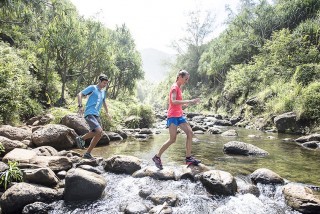
The Kalalau Trail in Hawaii. Photo: Scott Draper
While the idea of the most scenic trail run in each state might be a bit subjective, every state from Montana (the Hyalite Creek Trail has 11 active waterfalls) to Wisconsin (featuring the ancient forest of the Ice Age Trail) offer a unique beauty.
Here are some trails that are not to miss if you get the chance.
RELATED: Destination America: The Ultimate Running Guide
Alabama: Oak Mountain Trails
The fast flowy trails of Oak Mountain’s singletrack offers something for every runner from rocks and roots to smooth and easy terrain. Choose from six trails covering 51 miles.
Alaska: Williwaw Valley Trail
Part of the Chugach State Park Hillside Trail System, the Williwaw Valley Trail is a 14 mile out-and-back run that illustrates the best of Alaska. Emerald-colored lakes, wandering moose and the peak of Mount Williwaw are visual to the eye as you climb 1,585 feet.
Arizona: White Tank Regional Mountain Park
With 25 miles of shared trails, runners can choose to huff and puff up the Ford Canyon and Goat Camp trails or take it easier on Ironwood and Waddell. Breathtaking panoramic views of the valley and mountainside are a treat to the eyes.
Arkansas: Sylamore Trail
This out-and-back trail is 23 miles one way following North Sylamore Creek and is accessible via three in district trailheads to make your run longer or shorter along this sometimes rocky terrain. Bears, copperheads, rattlesnakes and other dangerous wildlife frequent the area.
California: Backbone Trail
Running from Pacific Palisades to Point Mugu, the 68-mile Backbone Trail offers runners plenty of challenging terrain with ocean and island views. On a clear day, views of the valley can also be seen.
Colorado: Colorado Trail
No matter what section of the trail you hit running 483 miles from the outskirts of Denver all the way to Durango, you will be in for a visual delight. Mountain peaks from Elbert and Massive to open fields of wildflowers, abundant wildlife and old mining towns greet you along your journey.
Connecticut: White Memorial Conservation Center
The 35 miles of fairly flat trail at the White Memorial Conservation Center are an environmental wonderland. Visitors can observe wildflowers in spring and summer, the best of changing leaves and a paradise of birds. Be sure to warm up or cool down on the wooden boardwalk trail.
Delaware: Brandywine Creek State Park
Ranging from rocky to wide open terrain, trail goers will see walls created by masons in the early 1900s, wildflowers and the Brandywine River as they enjoy any or all of the four trails in Brandywine Creek State Park. All trails range from easy to moderate and are between 1.8 and 2.5 miles long.
Florida: Stephen Foster State Park Foster’s Hammock Loop Trail
Sing out loud the Stephen Foster song, “Old Folks at Home,” as you navigate the eight mile singletrack of the Foster’s Hammock Loop Trail. Swamp forest, limestone outcroppings and the Suwannee River Overlook are just some of the scenery along this trail.
Georgia: Pine Mountain Trail
Watch for the wild turkeys and deer as you navigate the 23 miles of singletrack (with additional surrounding trails to add mileage) on the Pine Mountain Trail. Expect water crossings, rocks and roots, climbs and flats amongst the pine trees and fauna as you follow the Pine Mountain ridge.
Hawaii: Kalalau Trail
Not for the timid, the Kalalau Trail along the Na Pali Coast in Kauai has been named one of the most dangerous but most beautiful in the world. This rugged and slippery 11-mile trail one way takes runners from Keʻe Beach to the Kalalau Valley with spectacular views. A permit is required after the first two miles.
Idaho: Continental Divide National Scenic Trail
Bordering the Montana state line, the Continental Divide National Scenic Trail (CDT) offers views of Idaho’s Lemhi River Valley and Montana’s Big Hole Valley. The 270 miles of trails beginning on the edge of Yellowstone has beautiful color (especially in the fall) and a chance to see wildlife from bears to moose.
Illinois: Palos Forest Preserve
If you want wide track or singletrack, twisty and more technical, or smooth and obstacle-free, the trail system at the Palos Forest Preserve has it all. Ten trails ranging from one to five and half miles offer views of sloughs and lakes, trees and woodland creatures.
Indiana: Trail 9 Indiana Dunes State Park
At only 3.75 miles, Trail 9 doesn’t seem to be too difficult. The catch is that the trail is comprised entirely of sand offering tremendous views of the dunes and Lake Michigan while dipping into the forest and burning the quads.
Iowa: Wabash Trace Nature Trail
This Southwestern trail travels over bridges, through forests, past Iowa farmland and through eight towns including Council Bluffs and Shenandoah. The 68-mile converted rail trail is accessible in each town it passes through.
Kansas: Clinton Lake State Park
This park, just outside of Lawrence, has 23 miles of trails. Besides lake views, runners go through an oak and hickory forest, and can see wildlife like beavers, gray fox and bluebirds.
Kentucky: Land Between the Lakes Canal Loop
An 11-mile loop, runners can expect to see plenty of wildlife amongst the forest of trees while climbing the hills. Be prepared for creek crossings and an abundance of wildflowers in the spring and summer months. This trail offers the opportunity to connect to other trails adding up to an additional 11 miles to a route.
The post 50 States, 50 Trails to Run appeared first on Competitor.com.
Video: 5 Hot Trends From The Running Event 2015
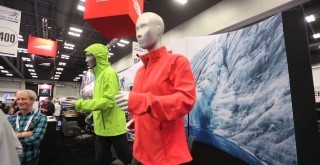
In this video, senior editor Mario Fraioli highlights five running industry trends that stood out at The Running Event trade show, held last week in Austin, Texas.
RELATED:
— What Caught Our Eye At The Running Event Trade Show
— 40 Shoes You’ll Want to Check Out in 2016
The post Video: 5 Hot Trends From The Running Event 2015 appeared first on Competitor.com.
Ultrarunning at a Crossroads: Is There a Growing Doping Problem on the Trails?
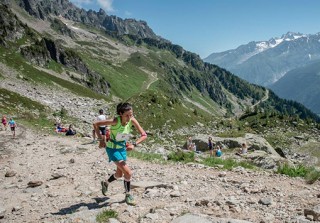
Italian runner Elisa Desco was suspended by the IAAF for two years for using performance-enhancing drugs, but has been cleared to compete since her ban ended more than three years ago. Photo: Scott Sports
Although many sports have been bogged down by performance-enhancing drug problems over the past two decades—cycling, baseball, track and field, marathoning—the sport of ultrarunning, at least in the United States, has yet to be mired in a doping scandal. The small but flashy endurance sport has seen rapid growth in recent years, from front of the pack elite racers to tens of thousands of recreational runners looking for their next challenge.
But with an increase in professionalism, prize money and sponsorship deals has come the pressing business of how to handle the inevitable doping problem. As the sport emerges from its grassroots beginnings, it finds itself at a rather challenging inflection point.
Last week, after late revelations that 33-year-old Italian runner Elisa Desco was planning to race in The North Face Endurance Challenge 50-mile championship event in the Marin Headlands near San Francisco, many pro runners took to social media to protest. Desco, an accomplished and decorated athlete, won the 2009 World Mountain Running Championship in Campodolcino, Italy, only to be stripped of the title after testing positive for the banned substance erythropoietin or EPO, a hormone that stimulates red blood cell production and improves endurance.
The IAAF suspended Desco from competition for two years, a ban that expired on Aug. 28, 2012. Since her return she’s won many high-profile international races, including the 31K Sierre-Zinal mountain race in the Swiss Alps in 2013 and the Skyrunning World Championship at the Mont-Blanc Marathon in Chamonix, France in 2014. The TNF 50 was her first race in the U.S., where trail and ultrarunning are governed by U.S. Track & Field (as well as the IAAF and the World Anti-Doping Agency) but has no drug-testing protocol or budget for trail running races.
In 2007, The North Face Endurance Challenge introduced the world’s largest prize purse in ultra-distance trail racing, with $30,000 total and $10,000 to the top male and female finishers in the 50-mile distance. Since Desco served her ban, she was legally allowed to enter the race and run for a chance at the big payday. But many ultrarunners, including Olympian-turned-elite-ultrarunner Magdalena Boulet, are speaking out.
“I’m disappointed that the race organization allowed her into the elite field. I don’t care if a doper served their ban and are technically eligible to race,” Boulet said through an email. “Cheaters not only hurt competitors, they hurt the sport as a whole, and they should not be tolerated.”
RELATED: An Open Letter to Seb Coe To Ban Convicted Dopers for Life
Ellie Greenwood, a two-time 100K world champion who was named Ultrarunner of the Year by Ultrarunning magazine in 2011, 2012, and 2014, was equally troubled with seeing Desco on the starting line.
“I honestly struggle to know what The North Face Endurance Challenge should have done, though I will admit I feel a little disheartened to line up against someone who has cheated in the past,” Greenwood said. “Our sport deserves to have more doping controls to maintain the ethics and moral standards. But I do appreciate the huge costs of doping controls.”
Pressed for comment, Katie Ramage, The North Face Endurance Challenge Director of Sports Marketing, said, “The issue is incredibly complex and while we’d like to have a solution readily available, we believe it’s more important that lasting change is created by doing it right, which takes time.”
Admittedly caught off-guard by the late entry of Desco, it wasn’t until the uproar on social media that the race organizer’s had any idea she had previously served a ban for PED use. Desco started the race and ran strong early on, but then dropped out of the event after about 2 hours.
At this point it’s impossible to know if U.S. trail running and ultrarunning already has a problem, but chances are likely there are runners doping—even if it’s just a tiny percentage. Making assumptions though, can lead runners, race directors and fans to cast aspersions on the innocent, and that’s not good for the sport. But with very little testing, it’s hard to think it’s not happening at all, especially with how easy it is to get the drugs. Who really knows who’s cheating? (Triathlon, road running and track and field have had numerous PED busts, but they were only found out because of testing. And it’s already been documented that doping has permeated the amateur ranks of cycling and another report came out just last week.)
And with marijuana—a prohibited substance under WADA standards—now legal in several U.S. states (either medicinally or recreationally) and a handful of ultrarunners admitting to using it recreationally or in competition, the gray area is only getting more gray.
This summer, ultrarunning news site iRunFar.com posted the results of a one-question anonymous survey which asked: Have you ever used a performance-enhancing drug (PED) while training for or participating in an organized ultramarathon (a running/hiking event/race of 50K in length or longer)? Out of the 705 respondents, 9 percent admitted cheating. But if that’s a 705-person race, that could mean that 63 runners in the field could be doping.
Only one ultrarunning race organization has made public any plans to tackle the doping issue. Last week, the Altra U.S. SkyRunning Series announced that they are working to get all convicted dopers banned for life from their events.
“The governing bodies of the sport of athletics nationally and globally have been shown to be woefully unprepared or unwilling to deal with doping and will take years to get anywhere due to politics and bureaucracy,” series director Ian Sharman said in an email. “I don’t want to see the sport I love go the same way as cycling and lose credibility.”
“The only event that I’m aware that does testing in the trail, mountain or ultra space is the Pike Peaks Marathon,” said Nancy Hobbs, executive director of the American Trail Running Association. “We’ve always been proponents for testing in our sport and for race directors to take the lead on doing the testing, especially when you have a lot of dollars involved in prize money.”
The better an athlete performs on the international stage, the greater their chances are of being tested. “Once you reach a certain [performance] level, like a Joe Gray or a Max King, you are tested,” Hobbs said.
King, for instance, was added to the World Anti-Doping Association international testing pool for out-of-competition testing after winning the 2011 IAAF World Mountain Running Championship.
“I’ve been tested three times this year and I’ve probably been tested 30 times in my career,” King said. “But most trail and ultrarunners will never be tested because you need a good result at an IAAF Championship and really those are focused on road running.”
Consistent in- and out-of-competition testing, however flawed, is the first step toward clean sport, yet most of the prominent U.S. races still see it as an unnecessary expense. The U.S. Anti-Doping Agency doesn’t publicly discuss fees, but its media relations specialist Ryan Madden said that, although it does require funding, providing drug-testing services for races is not cost-prohibitive for most event organizations.
At the 2013 Desert Solstice ultra-distance track event, race director Jamil Coury, owner of Aravaipa Running, paid roughly $2,500 to have two record-setting runners tested. “We have a doping control officer from USADA available on-call for the event in case records are set and they come out to meet the athletes within 24 hours,” Coury said.
It’s not inexpensive, but it might just be the price of integrity. Hobbs said the cost is amortized from there.
“From our experience, adding additional athletes would cost $300-400 more per test per person,” Hobbs said. A rough estimate might mean that in-competition testing of the top five men and top five women could cost a race organization $5,000-6,000, though this can vary greatly based on type of testing and location.
“USADA works regularly with individual event organizers at every level of sport to provide testing programs that best serve both their competition and their resources,” Madden said. “The truth is, if you value fair sport and the rights, health, and safety of athletes, the question is not whether you can afford to test, its whether you can afford not to.”
The post Ultrarunning at a Crossroads: Is There a Growing Doping Problem on the Trails? appeared first on Competitor.com.
December 7, 2015
How to Spike Your Shoes for Icy Winter Runs

Photo: James Carney
Freezing temperatures and icy precipitation are enough to make many runners hit the treadmill. For those undeterred by inclement weather, there are other options. In addition to shoes specifically designed for winter running—with rubber or metal studs mounted in the outsole—there are quick and simple methods for keeping the tread of your favorite kicks on the road. Here are two optoins: an easy-to-use kit sold at running shops (left) and a do-it-yourself method (right), depending upon your level of comfort in hardware stores.
IceSpike Deluxe Package, $30
The kit includes 32 notched, composite spikes and an Icespike wrench for installing the spikes into your shoes. Icespike recommends using at least 12 spikes per shoe—six in the forefoot and six in the heel. Do not use any in the arch, and avoid areas that might poke your foot. Mark where you want the spikes to go, then tap each location with something sharp (a push pin or skewer) as a starting point for insertion. Put a spike in the wrench, and screw the spike down until it’s secure. Extra spikes are included in case of excessive wear. Expect to get 300-400 miles out of a single set of Icespikes.
Do-it-yourself shoe spikes, $5
At your local hardware store, pick up 24 (12 per shoe) 3/8-inch hex head sheet-metal screws. Hex head screws have multiple edges, meaning more grip in slippery conditions. (You’ll need size #8 or #10 screws. The 3/8-inch size refers to the length—you don’t want them to poke through to your foot. ) Mark on the perimeter of the outsole where you want the screws to go—aiming for six in the forefoot and six in the heel. To insert the screws, pre-drill the holes with a 1/16-inch drill bit and hand-twist the screws until they are secure. (A power drill and a hex head drill bit make it even quicker and easier.) Stop drilling when the head of the screw touches the outsole.
Video: DIY Ice Spikes for Winter Running
The post How to Spike Your Shoes for Icy Winter Runs appeared first on Competitor.com.
Ryan Hall's Blog
- Ryan Hall's profile
- 21 followers



